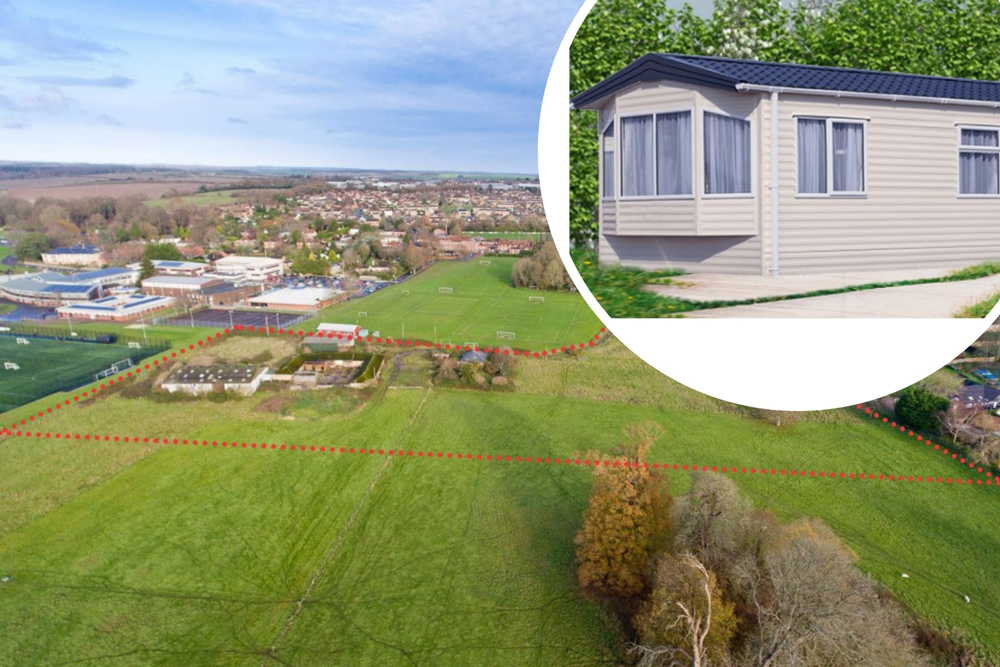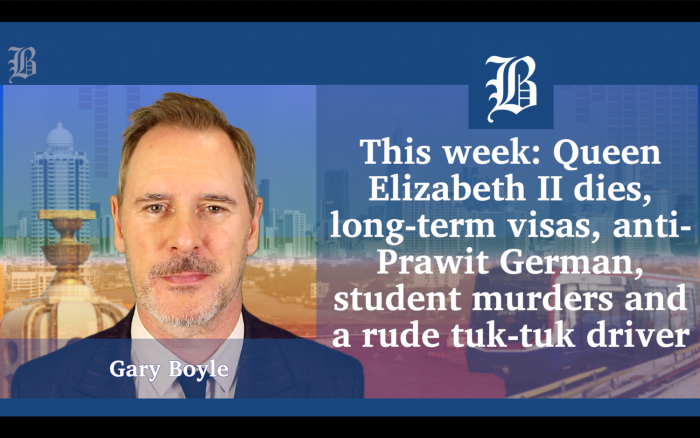Caravans And The UK: Is This City Becoming A Ghetto?

Table of Contents
The Rise of Caravan Sites in UK Cities
The proliferation of caravan sites within UK city limits is a complex phenomenon driven by several interconnected factors. Understanding these factors is crucial to addressing the concerns surrounding their impact.
Factors Contributing to Increased Caravan Site Numbers
Several pressures contribute to the growth of caravan sites in urban areas:
- Increased demand for affordable housing: The UK's housing crisis has left many struggling to find affordable accommodation. Caravan sites, while often temporary, offer a relatively inexpensive housing solution.
- Planning permission challenges and loopholes: Navigating the planning system for permanent housing can be complex and expensive. Exploiting loopholes or ambiguities in planning regulations can make establishing caravan sites easier than obtaining permission for traditional housing developments.
- Growth of the transient traveller community: The nomadic lifestyle of some communities necessitates access to temporary living spaces, increasing the demand for caravan sites.
- Lack of adequate provision for traveller sites: Insufficient provision of designated traveller sites by local authorities forces many to seek alternative accommodation, often resulting in the establishment of unofficial caravan sites in urban areas.
While precise nationwide statistics are difficult to obtain, anecdotal evidence and local news reports suggest a significant increase in caravan sites in several major UK cities over the past decade. Further research into local council planning data would provide a clearer picture of this trend.
Geographical Distribution of Caravan Sites
The geographical distribution of caravan sites is not uniform across the UK. Certain cities and regions experience higher concentrations than others, often in areas with existing social and economic challenges. Mapping the location of these sites against factors like proximity to schools, hospitals, and areas of high deprivation would reveal valuable insights into potential spatial inequalities. Visualizing this data through maps and charts would clearly demonstrate any clustering or spatial patterns indicative of potential segregation.
Socioeconomic Impacts of Caravan Sites
The impact of caravan sites on surrounding communities is multifaceted, presenting both positive and negative consequences. A nuanced understanding of these impacts is crucial for informed policymaking.
Positive Impacts
While often overlooked, caravan sites can have some positive impacts:
- Potential for economic activity and job creation: Caravan sites can generate employment opportunities in maintenance, security, and related services.
- Contribution to the diversity of urban landscapes: Well-managed caravan sites can add to the cultural tapestry of a city, offering a glimpse into different lifestyles and communities.
- Provision of affordable housing options: While temporary, these sites provide a low-cost housing solution for those unable to access traditional housing markets.
- Examples of successful integration: Some urban caravan sites have demonstrated successful integration into the surrounding community, showing the potential for co-existence and mutual benefit.
Negative Impacts
However, concerns remain about the potential negative consequences:
- Concerns about increased crime rates: While correlation doesn't equal causation, some residents express concerns about increased crime in areas with high concentrations of caravan sites. This warrants further investigation, separating any observed correlations from potential underlying causal factors.
- Strain on local infrastructure and public services: An influx of residents can strain local resources, including schools, healthcare services, and waste management systems.
- Potential for environmental issues: Improper waste disposal and inadequate sanitation can lead to environmental problems in and around caravan sites.
- Social segregation and potential for ghettoization: The concentration of caravan sites in specific areas might lead to social segregation and feelings of isolation, potentially contributing to the development of ghettos. This is a sensitive area requiring careful analysis to avoid inflammatory language.
Addressing the Concerns: Solutions and Policy Recommendations
Addressing the concerns surrounding caravan sites in UK cities requires a multi-pronged approach involving improved planning, investment in infrastructure, and community engagement.
Improved Planning and Regulation
Effective regulation is paramount:
- Stricter enforcement of existing regulations: Local authorities need to rigorously enforce existing planning regulations related to caravan sites, ensuring compliance with health, safety, and environmental standards.
- More transparent and inclusive planning processes: Community consultation should be central to the planning process, ensuring that the concerns of residents are addressed before approving new caravan sites.
Investing in Infrastructure and Services
Adequate resources are essential:
- Upgrading infrastructure: Investing in infrastructure such as roads, sanitation systems, and public transport in areas with high concentrations of caravan sites can mitigate potential negative impacts.
- Facilitating better integration: Initiatives promoting integration between settled and transient communities can help foster understanding and break down social barriers.
Promoting Dialogue and Understanding
Communication is key:
- Community engagement: Facilitating open dialogue and communication between residents, local authorities, and caravan dwellers is crucial for finding sustainable solutions.
- Initiatives promoting understanding: Initiatives that promote intercultural understanding and address prejudices can help build positive relationships between different community groups.
Conclusion
The issue of "Caravans and the UK" is complex and doesn't lend itself to simple answers. While caravan sites can offer affordable housing and contribute to urban diversity, they also present challenges regarding infrastructure, social integration, and the potential for ghettoization. The evidence suggests that while some areas might experience negative impacts, conclusively stating that all caravan sites lead to ghettoization is an oversimplification. The key lies in responsible urban planning, proactive community engagement, and the implementation of robust regulations that ensure fair and equitable outcomes for all. We need a more nuanced approach to the management of urban caravan sites. Further research into the specific impacts of caravan parks in different UK cities is crucial, coupled with community-led initiatives that prioritize both affordable housing and social cohesion. Let's continue the discussion on the impact of caravan parks in the UK and work towards sustainable solutions.

Featured Posts
-
 Caso Maddie Mc Cann Polonesa Detida No Reino Unido
May 09, 2025
Caso Maddie Mc Cann Polonesa Detida No Reino Unido
May 09, 2025 -
 Anchor Brewing Company Shuts Down A Legacy Concludes After 127 Years
May 09, 2025
Anchor Brewing Company Shuts Down A Legacy Concludes After 127 Years
May 09, 2025 -
 Update Pam Bondi On The Jeffrey Epstein Client List
May 09, 2025
Update Pam Bondi On The Jeffrey Epstein Client List
May 09, 2025 -
 Jayson Tatum Injury Update Bone Bruise Could Keep Him Out Of Game 2
May 09, 2025
Jayson Tatum Injury Update Bone Bruise Could Keep Him Out Of Game 2
May 09, 2025 -
 Elon Musks Net Worth How Us Economic Shifts Impact Teslas Ceo
May 09, 2025
Elon Musks Net Worth How Us Economic Shifts Impact Teslas Ceo
May 09, 2025
Latest Posts
-
 News From The Bangkok Post The Push For Better Transgender Rights
May 10, 2025
News From The Bangkok Post The Push For Better Transgender Rights
May 10, 2025 -
 The Bangkok Post And The Ongoing Struggle For Transgender Equality
May 10, 2025
The Bangkok Post And The Ongoing Struggle For Transgender Equality
May 10, 2025 -
 The Impact Of Trumps Executive Orders On The Transgender Community A Call For Stories
May 10, 2025
The Impact Of Trumps Executive Orders On The Transgender Community A Call For Stories
May 10, 2025 -
 Examining Transgender Equality Issues Highlighted By The Bangkok Post
May 10, 2025
Examining Transgender Equality Issues Highlighted By The Bangkok Post
May 10, 2025 -
 The Bangkok Post And The Fight For Transgender Equality In Thailand
May 10, 2025
The Bangkok Post And The Fight For Transgender Equality In Thailand
May 10, 2025
